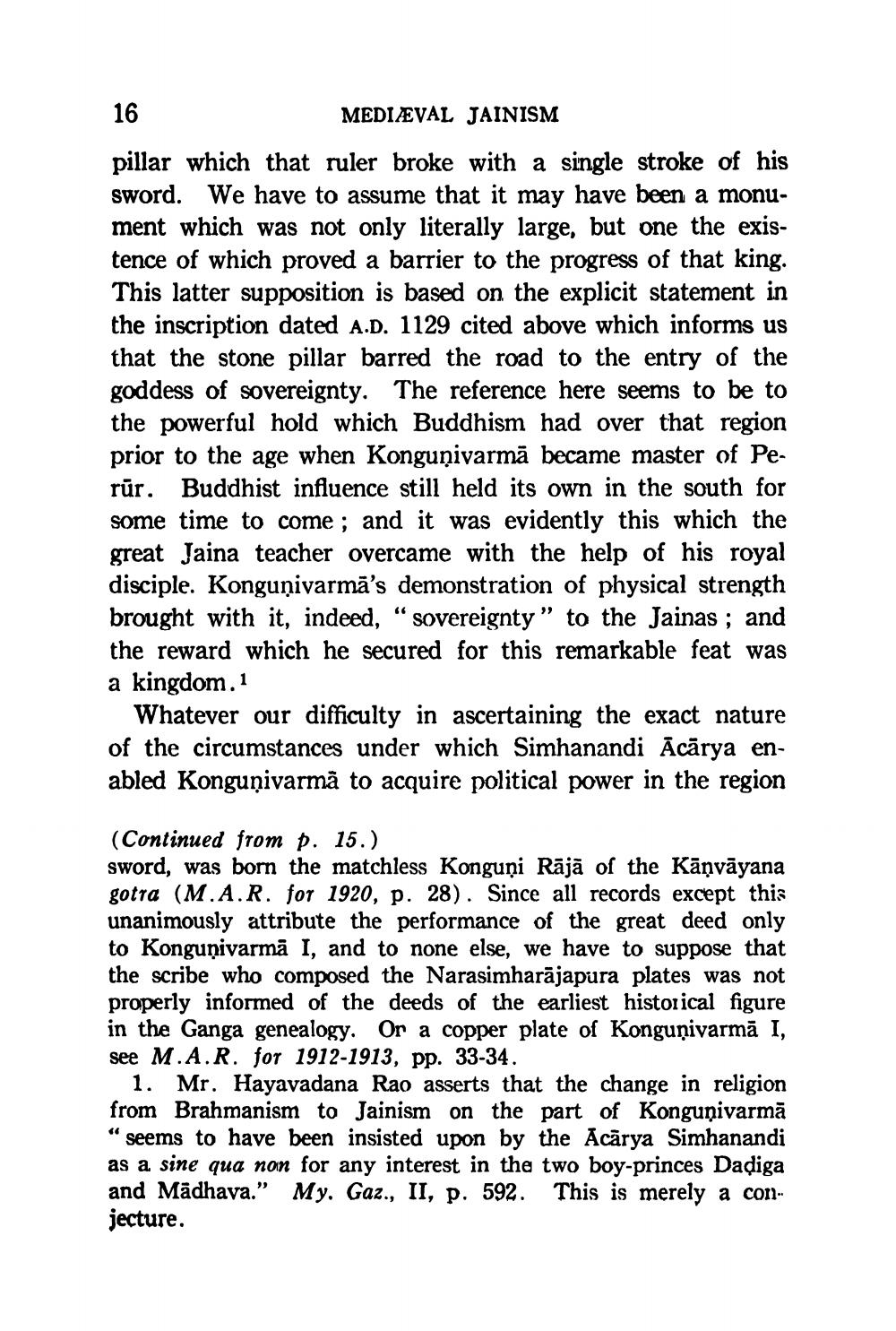________________
16
MEDIÆVAL JAINISM pillar which that ruler broke with a single stroke of his sword. We have to assume that it may have been a monument which was not only literally large, but one the existence of which proved a barrier to the progress of that king. This latter supposition is based on the explicit statement in the inscription dated A.D. 1129 cited above which informs us that the stone pillar barred the road to the entry of the goddess of sovereignty. The reference here seems to be to the powerful hold which Buddhism had over that region prior to the age when Konguņivarmā became master of Perür. Buddhist influence still held its own in the south for some time to come ; and it was evidently this which the great Jaina teacher overcame with the help of his royal disciple. Konguņivarmā's demonstration of physical strength brought with it, indeed, “sovereignty” to the Jainas ; and the reward which he secured for this remarkable feat was a kingdom. 1
Whatever our difficulty in ascertaining the exact nature of the circumstances under which Simhanandi Ācārya enabled Konguộivarmā to acquire political power in the region
(Continued from p. 15.) sword, was born the matchless Konguņi Rājā of the Kāņvāyana gotra (M.A.R. for 1920, p. 28). Since all records except this unanimously attribute the performance of the great deed only to Konguņivarma I, and to none else, we have to suppose that the scribe who composed the Narasimharājapura plates was not properly informed of the deeds of the earliest historical figure in the Ganga genealogy. Or a copper plate of Konguņivarmā I, see M.A.R. for 1912-1913, pp. 33-34.
1. Mr. Hayavadana Rao asserts that the change in religion from Brahmanism to Jainism on the part of Konguņivarmā “ seems to have been insisted upon by the Acārya Simhanandi as a sine qua non for any interest in the two boy-princes Dadiga and Mädhava.” My. Gaz., II, p. 592. This is merely a conjecture.




